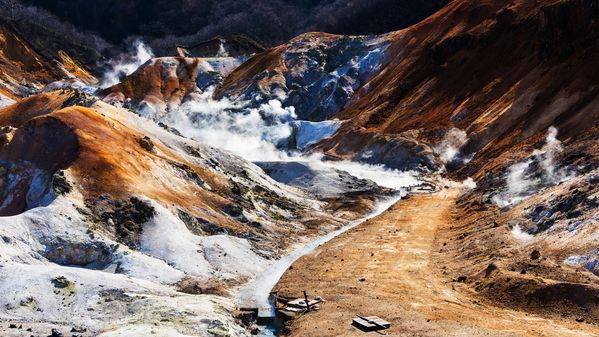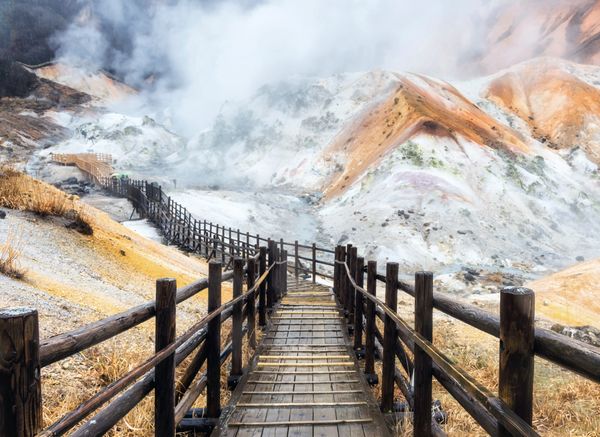
Spirited away
Known for its volcanos, natural hot springs and rugged untouched wilderness, Hokkaido has long since held a fascination for wanderlusters
Words Harriet Compston
Photography blanscape/Istock, Patryca Chociej/Unsplash, Ippei Naoi

An otherworldly island of brilliant-blue volcanic lakes, majestically formed peaks and primeval forests, Hokkaido, Japan’s last frontier, is a haven of extraordinary natural wonders. The country’s most northerly main island (and the second largest), less than 5% of the population lives here – but it still packs a punch.
Skiing is the big thing in Hokkaido thanks to its exceptionally powdery snow, but there’s also a compelling history, vibrant capital city, outstanding scenery and excellent food. Most of Japan’s remaining indigenous inhabitants, the Ainu, live here, too. But, perhaps, best of all, is the island’s onsens, the beating heart of Japanese life.


Ever since the eighth century, the Japanese have used onsens for purifying the body and soul. Today is no different and Hokkaido boasts some of the top mineral-rich natural hot springs. From sleek city spas to wild ocean-side caves, the island has a plethora of onsens. But, for something totally unique, head to the spa town of Noboribetsu, whose waters stem from a 24-acre smoking geothermal crater.
Set in Jigokundani or ‘Hell Valley’ in Shikotsu-Toya National Park, the crater was formed from the eruption of Mount Kuttara some 20,000 years ago. The result was a Martian landscape of boiling lava pits and fiery black sulphur calderas, so infernal and steeped in sulphur that it became known as a gateway to hell. However, this rugged primordial backdrop also provides many people’s idea of heaven.

‘Take to the waters and share your dip with the local Japanese Macaques, which are also known as snow monkeys. ‘

Producing over 10,000 tons of thermal water every day, Noboribetsu’s spas were originally used as hospitals for wounded soldiers recovering after the Russo–Japanese War in the early 20th century. One hundred years later, the healing properties remain but there is now a seductive spectrum of onsens ranging from an ashiyu (natural foot bath) in a steamy mountain stream to a soak in a modern hot basalt stone bathe, taking in the soul-stirring views.


With nine different types of springs, it’s the variety of thermal water which has helped put Noboribetsu on the map.
Nicknamed ‘fever water’ in English, the sodium- and chloride-heavy waters of the salt pool will have you sweating out all of your toxins while serenely floating on your back. Take to the waters and share your dip with the local Japanese Macaques, which are also known as snow monkeys. Then there’s the likes of acidic iron, alkaline, salt, radium and melanterite, which can tackle an abundance of health issues including bronchitis, neuralgia and eczema.
The best way to take the waters is to stay overnight at one of the town’s many ryokan (traditional inns) and hotels which have their own hot spring baths. For the indulgent, book a room at Dai-ichi Takimotokan hotel, home of arguably Japan’s best modern indoors hot spring baths, where you can experience seven of the different kinds of water.
After the waters, delve deeper into Shikotsu-Toya National Park and wind your way past warm volcanic rivers, geysers and steam caves to reach the gourd-shaped Lake Oyunuma.
A cauldron-like pond gushing out noxious 85°C black sulphur water, Oko no Yu, the Oyunumagawa River flows out of Oyunuma. Still hot, the river rushes through the forest, making for a surreal sight – which fits right in to this mystical land of heaven and hell.

